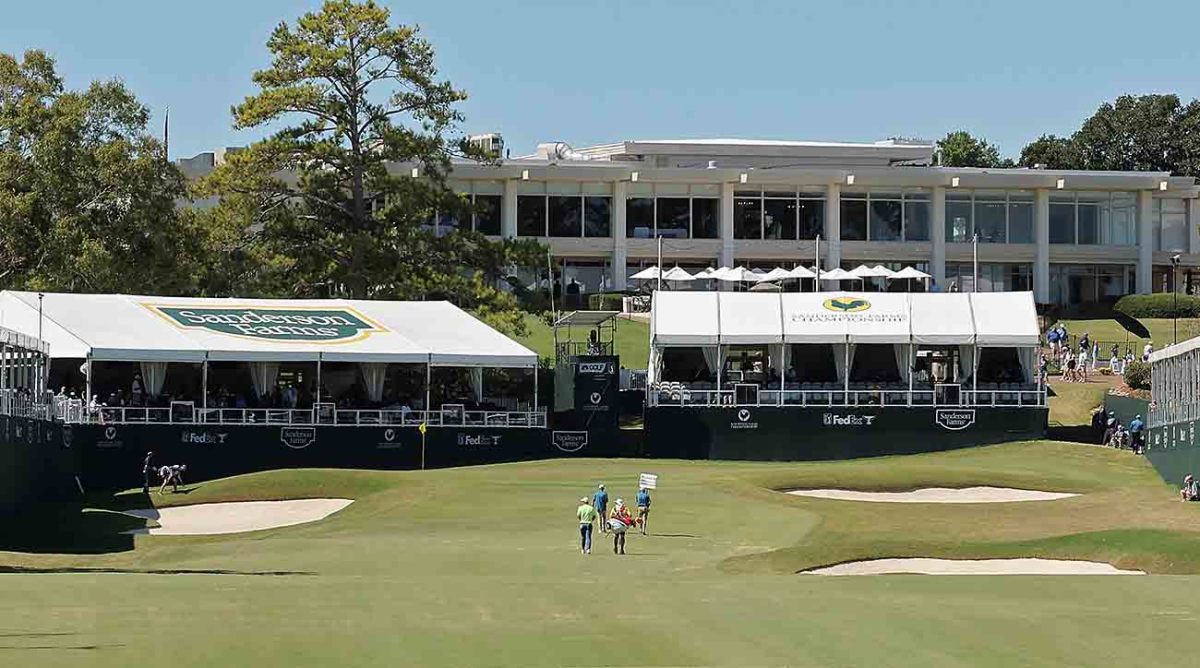Why So Serious? The PGA Tour Needs a Return to the Silly Season

’Tis the season to be silly? With all due respect to the PGA Tour’s intent on making pro golf a year-round sport, October, November and December have long been the Three Stooges on the game’s cluttered calendar. Nothing but shenanigans, a couple of noogies and a sucker punch—meaningless tournaments branded as a chance for players to upgrade their status and perhaps add another couple of million to their bank accounts.
Since the 2008 euthanization of the Skins Game—a huge TV hit until ratings began plummeting in the mid-1990s—the demise of the Wendy’s 3-Tour Challenge (2013) and several other unofficial events along the way, what once sufficed as a few months of insignificance at least offered viewers something different. Now it’s the FedEx Cup Fall. Seven more weeks of stroke play to placate the junkies and occupy Golf Channel air. Starless fields in foreign countries. A damn good reason to go rake leaves.

An even better reason to shake things up if Camp Ponte Vedra and the Saudis are indeed moving forward on that “framework agreement” we heard about five months ago. An alliance would almost certainly prompt changes in the Tour’s competitive structure, and those changes should include finding a more useful purpose for the year’s final quarter. Something interesting, something off the beaten path. Something to watch while the NFL replay center spends 3½ minutes determining whether the runner was down by contact.
In that context, a consolidation of the two leagues would have a positive effect on the product’s overall health. If LIV Golf’s renegades squared off against PGA Tour loyalists in an annual match-play affair right around Thanksgiving, you think that might draw an audience? The Ryder Cup has gotten a bit stale. The Presidents Cup was never fresh. Between the mud and bad blood, there’s a commodity with intriguing vibes just waiting to occur, although the Tour probably wouldn’t have the guts to ignite such a blaze.
That doesn’t mean it can’t happen. If the Saudi faction is truly committed to salvaging territorial rights and preserving its current team format, October would make an appropriate time for the Tour to explore similar options. Not the two-man deal in New Orleans, which hasn’t gained traction, but four to six players per squad, all of which would be constructed with a common thread such as nationality or collegiate ties. Unless it’s a sixth-grade game of dodgeball where the jocks obliterate the nerds, teams inspire rooting interest in a very natural form.
As autumn closes in on winter and the cupboard remains all but bare, December’s father-son gathering in Orlando is probably the only event worth keeping in a revised formation. Charlie Woods won’t remain 14 years old forever, however, and there are acres of fertile land to be cultivated if the sport is to be taken seriously as a 12-month presence. Back when there were no FedEx Cup playoffs and the Tour’s regular season lasted until early November, the lengthy string of weak-field tournaments at the end of the journey were deemed disposable.
Many of them died peacefully, only to see the Tour immediately refill the fall with cut-rate events that looked exactly like the ones it had terminated. In 2013, it introduced the wraparound schedule—everything held after the Tour Championship constituted the start of the new season instead of winding up the previous one. It was a poorly disguised attempt at getting top-tier players to participate in tournaments starving for star power, lest those guys fall way behind in the FedEx Cup standings.
It didn’t really work, nor was anyone all that surprised. The big names were making way too much money to worry about where they stood in January for a postseason derby in September.
So here we are, 10 years later, on the verge of a historic union between two hated rivals and three empty months to play with. What we have now doesn’t work, and the Saudis aren’t going to give Jay Monahan $500 million so they can bus tables, while the commissioner dines on filet mignon before gassing up his private jet. The enemy league has every right to believe it will remain a competitive element, which takes us to the Land of Compromise, which takes us to a neighborhood full of possibilities.
There’s just one little problem. The Tour doesn’t really care about the fan’s best interests. The welfare of the partnerships with its title sponsors is by far its top priority, followed by its relations with CBS and NBC. The guy who watches those networks on weekend afternoons doesn’t even show up on the Tour radar because he has no fiscal bearing on Camp Ponte Vedra’s grand financial scheme. The Eye and the Peacock pay the same for their television rights whether he tunes in or doesn’t.
With that in mind, it’s easy to understand why the Tour is so reluctant to invest in the year’s final three months. Monahan moved the playoffs to August so they wouldn’t have to compete with the NFL and college football, a shift made easy by the PGA of America’s eagerness to stage its major championship in May.
Why commit to a cross-gender event with the LPGA? Why embrace the concept of team competition when Golf Channel is the only realistic option as a carrier? Why agree to a Ryder Cup–like rumble with a league that stole its own players? How on Earth could Monahan forgive himself if the Renegades beat the Loyalists? Is it even possible to sell such a sexy showdown if it was contested in the latter half of November?
Because all those ideas would be pretty cool to see. Because they collectively represent a progressive method of helping the game get stronger. Because an 8-year-old girl might happen to catch Daddy watching Nelly Korda kick Rickie Fowler’s ass and decide she wants to give golf a try. Because it’s not always about the money every single time.
Because October, November and December don’t offer us much to remember. Because raking leaves is no fun whatsoever.
